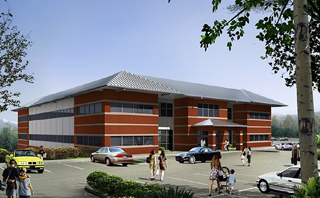|
Subscribe / Renew |
|
|
Contact Us |
|
| ► Subscribe to our Free Weekly Newsletter | |
| home | Welcome, sign in or click here to subscribe. | login |
Construction
| |
 |
June 23, 2011
13 tips for choosing your medical space
Morss Medical Architecture

Morss
|
Often businesses will choose a space without proper analysis, only to discover a few months later that the space does not function as intended. Thorough analysis will prevent this problem and assure you that your space will work well for you for years to come.
Space selection is an individual process since every group is different in its goals and culture. There is no typical space, however here are 13 tips to keep in mind while you are searching.
Consider your patients
• Your new space must be easy for patients to find. It should be visible from a primary street. Don’t select space behind the Super Value or off a parking lot behind another building.
The image on this page is an example of an existing medical clinic that has great visibility from the street. It is located on a major street and is easy to find. Patients can see the parking lot as they drive up to the building, and once they park and step out of their car the entry to the building is very noticeable.
The decisions patients must make to get to this clinic and through the front door are very simple. This easy wayfinding system helps relieve patients’ stress and promotes your business.
• The parking lot should be visible when the patients are driving up to your new site. This seems like an obvious thing to do, but if a first-time patient can’t see the parking area it will create stress and project a negative image for your facility.
• There should be a drive-under canopy or patient drop-off at the front entry. It is a huge benefit for an elderly patient or someone in a wheelchair to be dropped off at the front door and not have to travel from a parking space to the building during a downpour. A drop-off canopy says you care about your patients and it projects a positive image for your group.
• If possible, your new space should be right inside the front door on the first floor. If you have to be on the second or third floor make sure your patients do not have to make more than one turn to get to your space after they come off the elevator. Two or more turns become confusing for older patients.
• It is important that the building has fire sprinklers. It lowers your insurance rate and construction costs and keeps your patients safe. Many buildings still do not have sprinklers.
• Make sure the building’s mechanical and electrical systems are adequate for medical use. Many buildings are designed for simple business uses and do not have systems that are robust enough or flexible enough for medical spaces.
Examine the space
Below are additional tips to keep in mind before you sign a lease to expand into a new space.
• The new space should have a regular shape with a minimum width of about 30 feet, which is enough room for a corridor with an exam room on each side. This is a critical design element. Efficient working patterns with short walking distances for providers are very hard to design in long, skinny spaces that are less than 30 feet wide.
• Make sure the parking stalls assigned to your space are full size (not compact) and the path from the parking lot to your office is barrier free.
• If the windows face to the south or west, make sure they have low-e glass.
• Check what kind of exterior signage is available for your new space. Many buildings have little or no exterior signage available. It is important that your patients can see your sign from the parking lot so they know where to enter the building.
• If upgrades such as better HVAC or electrical systems are required to make your new space usable for medical use, you can possibly negotiate with the landlord to have him or her pay for the upgrades.
• Make sure the space is not in an area subject to flooding.
• Watch out for freeway noise and vibration from traffic. The noise can be disruptive, and the vibration can cause sensitive instruments to malfunction.
If your new space complies with these tips, you have built a good foundation to start your new business venture.
James Morss is president of Morss Medical Architecture, a firm that specializes in outpatient medical facilities.
Other Stories:
- Friday Harbor hospital aims to be nation’s greenest
- Study will help UW’s Montlake Tower cut energy costs
- Swedish Issaquah aligns design with patient needs
- Good signage points the way to better health care
- 'Novel' process lets Swedish Issaquah hit fast forward
- ‘Hybrid’ rooms a low-cost answer to space needs
- Swedish women’s cancer center a one-stop shop
- Group Health is designing its clinic of the future
- Puyallup hospital tower puts focus on patients
- Evergreen opens center closer to its patients
- New VA complex to treat ‘emerging’ war injuries
- UW expansion stays on track despite big change in plans



